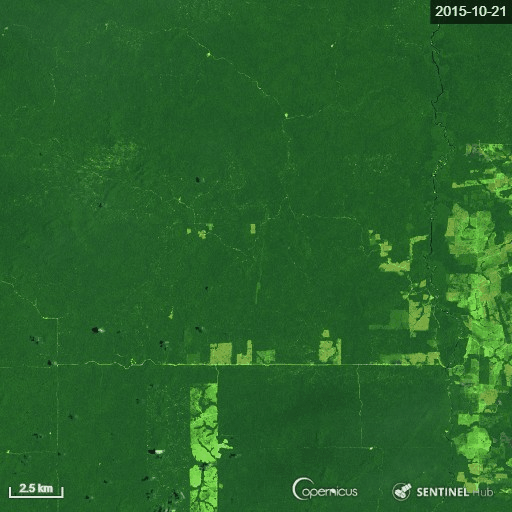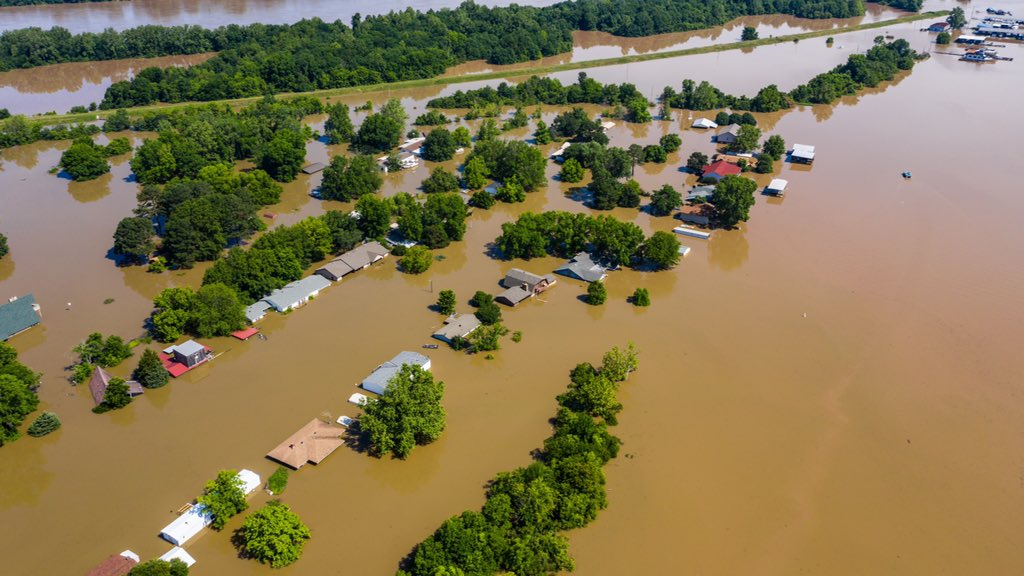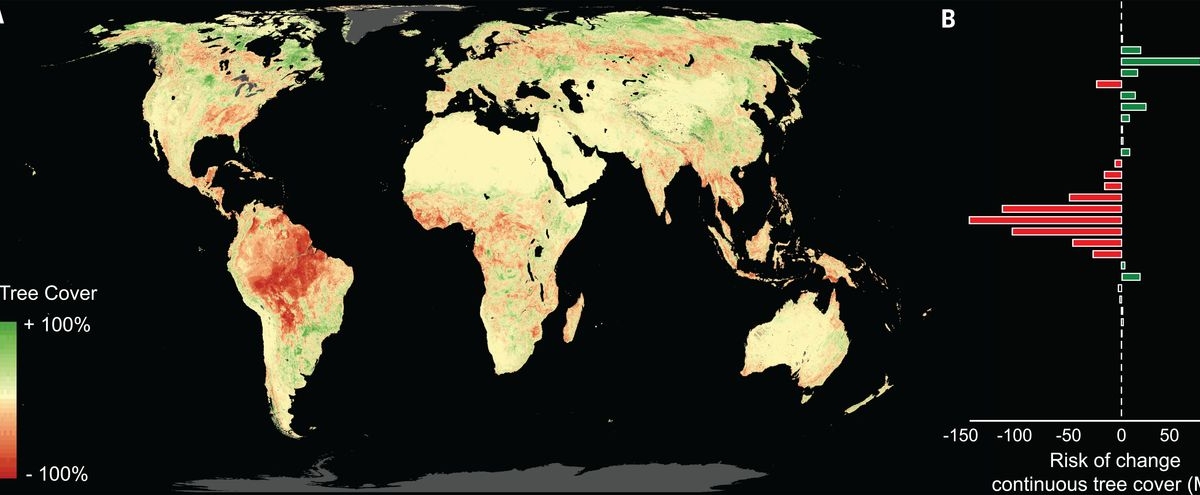Shocked scientists find 400 km of dead and damaged mangroves in Australia’s Gulf of Carpentaria – “We are getting these compounding effects that we just didn’t expect”
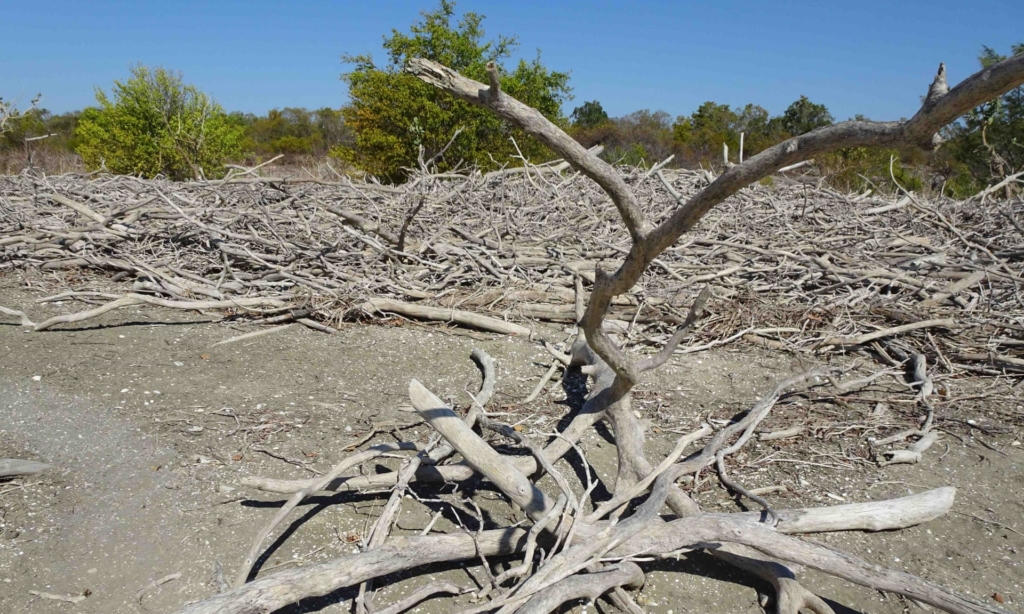
By Graham Readfearn
3 October 2019
(The Guardian) – A cascade of impacts including rising sea levels, heatwaves and back-to-back tropical cyclones has created 400 kilometers [249 miles] of dead and badly damaged mangroves in the Gulf of Carpentaria, a scientific monitoring trip has discovered.
Prof Norman Duke, of James Cook University, spent 10 days monitoring 2,000km of coastline from a helicopter, as well as conducting land-based checks at 32 estuaries along the coastline between Weipa, Queensland, and Cape Barrow in the Northern Territory.
In 2015, the remote area suffered what is thought to be the worst mass dieback of mangroves ever recorded. The cause, Duke said, was a combination of extreme heat, a temporary drop in sea level at the time caused by atmospheric pressure, and drought.
Duke and colleagues returned for a second follow-up monitoring trip to find devastating impacts of two cyclones had created a 400km stretch of dead and damaged mangroves.
There will almost certainly be impacts on fisheries and the ability of mangroves to protect the coasts from erosion. How the gulf can sustain that I don’t know.
Prof Norman Duke, Senior Research Scientist at James Cook University
In December 2018, Cyclone Owen battered the gulf’s coast and then, just three month’s later, the category 4 Cyclone Trevor struck just to the south of Owen’s impact area.
“We are getting these compounding effects that we just didn’t expect,” Duke told Guardian Australia.
“The mangroves hit in the 2015 dieback are already vulnerable because they are just recovering. Now you have all this dead wood that becomes like projectiles. It was a shock to me to see the damage.”
For hundreds of kilometres, Duke says what would usually be a landscape of lush green mangroves has been replaced by struggling dull grey trees with stripped foliage.
“Mangrove forests are the only continuous forests in this area. These are very successful trees and they usually form a solid green canopy that’s very distinctive. Now we see canopy damage – a grey colour where it would normally be green.”
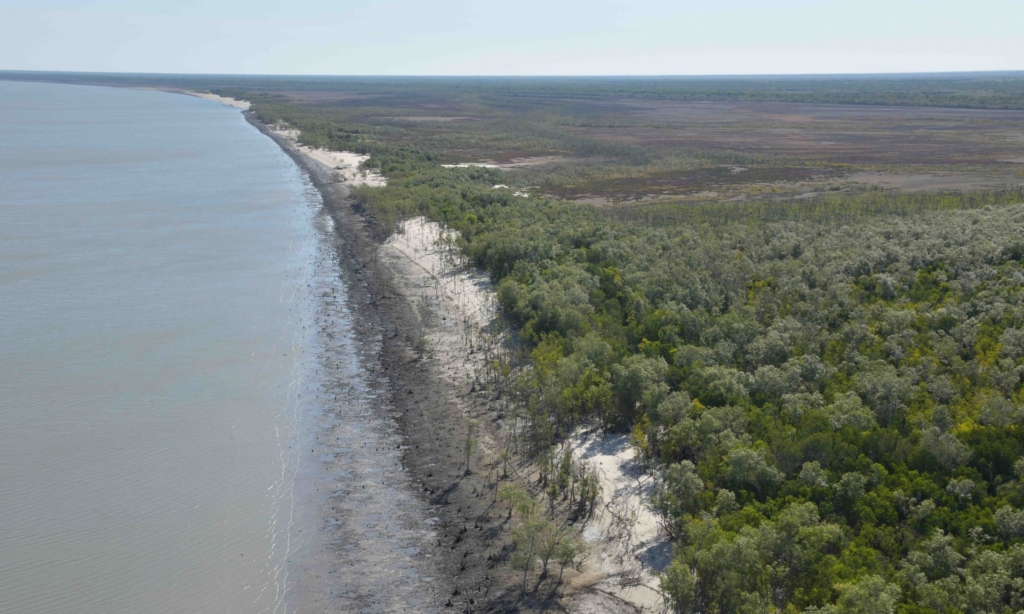
He said new growth was being smothered and damaged by the dead branches stacked up behind them and the shoreline in many places was also in retreat, caused partly by rising sea levels which, he said, were rising faster than the global average.
“How the gulf can sustain that I don’t know,” he said, referring to the impact of rising sea levels.
Duke said it was “abundantly clear” that the estuaries that flow into the gulf had greater levels of erosion than he had previously seen.
“There will almost certainly be impacts on fisheries and the ability of mangroves to protect the coasts from erosion,” he said.
Initial reports estimated the area damaged in 2015 to be about 1,000km in length, but Duke says subsequent visits put that number at more like 2,000km. About 8,000 hectares (20,000 acres) of mangroves had been affected. [more]
Shocked scientists find 400km of dead and damaged mangroves in Gulf of Carpentaria
